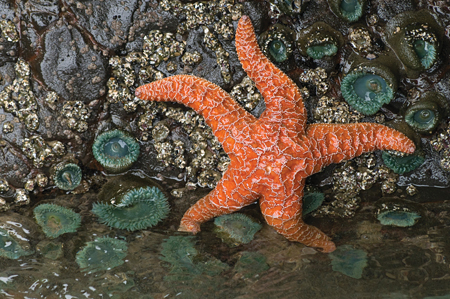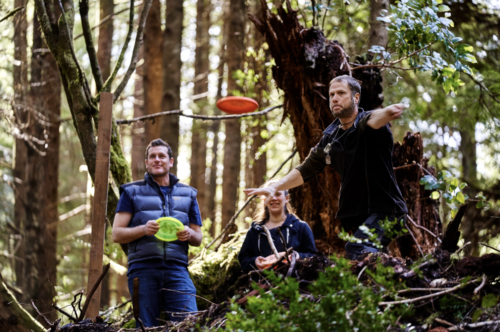
If it’s possible to see the world in a grain of sand, just imagine what you can see in an Oregon Coast tide pool. The tidal zone is filled with curious creatures that have adapted to survival in harsh conditions — from hot sun to cold water and rough seas. Jewel-toned anemones, sea stars, crab, spiny urchin, snails, tube worms and jelly fish are among the dozens of fascinating sea critters that make their homes in Oregon tide pools.
To help coastal visitors take a closer look and safely explore the tidal zone, Bandon-based Shoreline Education for Awareness and the U.S. Fish & Wildlife Service have teamed up to station volunteer tide pool docents among the rocks between May 1 and Labor Day in two locations near Bandon — Bandon Beach and Coquille Point.
At Bandon Beach near the Face Rock Wayside, legend has it you can hear a woman’s voice in the wind and see her face in the offshore Face Rock, one of many impressive sea stacks lining the shore. Explore the wide beach and tidal rocks that are not only full of marine life, but also serve as nesting habitat for shore birds. Shoreline Education Volunteers can offer insight into the various species that nest here.
At Coquille Point, part of the Oregon Islands National Wildlife Refuge, knowledgeable volunteers can also help identify marine life in the tide pools, answer questions and provide information about tide pool etiquette. This is another excellent spot to explore the beach, with an interpretative trail providing information on wildlife and Native American history. Harbor seals, murres, pigeon guillemots, tufted puffins and cormorants also make their homes here.
The best tide pool viewing times are during so-called minus tides, when the sea level dips 1 foot or more below the low tide point, exposing a world of wonder. That’s when it’s possible to spy organisms that are seen only a few hours per year. So pull on your waterproof boots and head out to discover the fascinating world of tide pools and the beaches that surround them.



